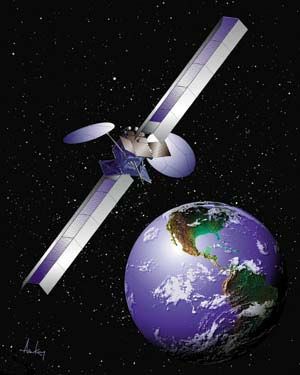High-definition televisions have come from the realm of early-adopting home theater enthusiasts into the average consumer market. Early HDTV sets cost thousands of dollars, but today stores sell some models for less than $300. However, buying an HDTV is just the first step in accessing HD programming. Consumers still need an HD media source to take full advantage of their new television sets.
High-definition satellite service -- or satellite HD -- is one service option for HDTV. By subscribing to a satellite HD service and purchasing the appropriate equipment, HDTV owners can watch a wide variety of programs with crisp, clear visuals and immersive surround sound.
Advertisement
Satellite HD service works almost the same way as standard satellite television. The satellite service provider receives programming from various sources, then beams a compressed digital signal containing its entire channel lineup through a satellite dish to a satellite in geosynchronous orbit. This means that the satellite maintains its position relative to the Earth, moving at the same speed as the Earth's rotation. If we couldn't put satellites into geosynchronous orbit, satellite television wouldn't exist. That's because the customer needs to align his or her own satellite dish so that it's aimed at the correct satellite overhead. If the satellite moved in relation to the Earth, the customer would have to continuously adjust the aim of his or her satellite dish, and sometimes the satellite would move to the other side of the Earth and no amount of adjustment would result in a signal.
The orbiting satellite acts as both a receiver and a transmitter. It receives the feed of channels from the service provider, then transmits that information back in a beam toward the Earth. The customer dish acts as an antenna. The dish picks up the signals and sends them to a receiver set-top box (STB). For a more detailed analysis on how satellite television works, read our article on "How Satellite TV Works."
Older satellite system receivers convert the signal from a digitally compressed format like MPEG-2 into an analog signal. But HDTV sets can interpret high-definition signals -- that's where satellite HD comes in. Satellite HD service uses the same principles as regular satellite television, but with different encoding methods. With the right STB, you can decode and view this high-definition signal.
In the next section, we'll learn how satellite service providers encode signals. We'll also discuss the equipment you'll need to receive those signals and decode them so that you can watch HDTV.
Advertisement



